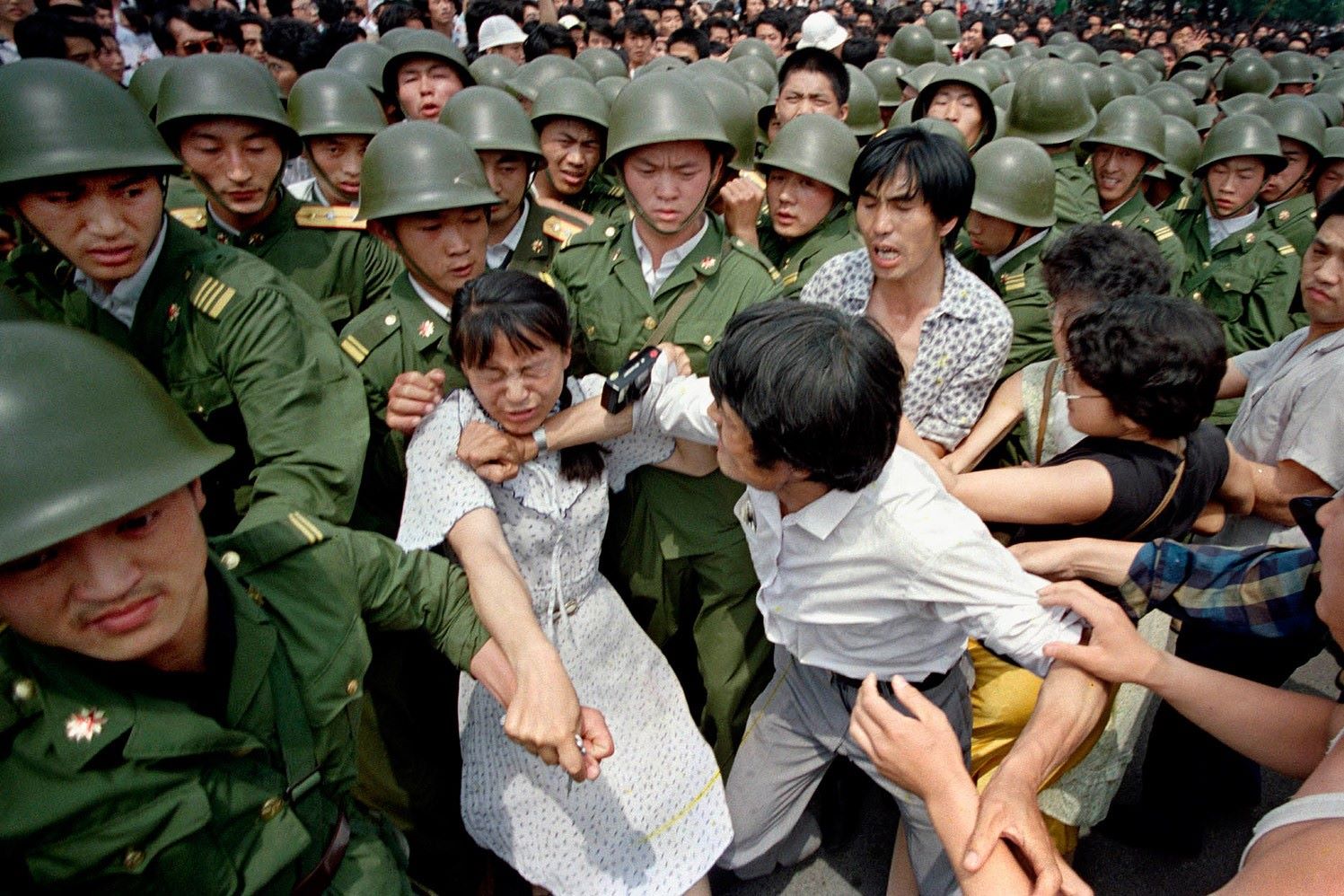
Who was the Tiananmen Square Tank Man? This question has puzzled many since that fateful day on June 5, 1989. Tank Man is the nickname given to an unidentified man who stood in front of a column of tanks during the Tiananmen Square protests in Beijing. His act of defiance became one of the most iconic images of the 20th century. Despite the global recognition of his bravery, his identity and fate remain unknown. Some believe he was a student, others think he was a worker. What is certain is that his courage symbolized the struggle for freedom and democracy in China.
Key Takeaways:
- The Tiananmen Square Tank Man stood up to a line of tanks, becoming a symbol of courage and resistance against oppressive regimes, inspiring people worldwide.
- The mystery surrounding the Tank Man's identity adds to the enduring intrigue of the image, highlighting the human spirit's capacity for bravery and resistance.
The Iconic Image
The Tiananmen Square Tank Man is one of the most iconic images of the 20th century. This powerful photograph captured a single man standing in front of a column of tanks during the 1989 Tiananmen Square protests in Beijing, China.
- The photograph was taken on June 5, 1989, the day after the Chinese military violently suppressed the Tiananmen Square protests.
- The identity of the man, often referred to as "Tank Man," remains unknown to this day.
- The image was captured by four different photographers: Jeff Widener, Stuart Franklin, Charlie Cole, and Arthur Tsang Hin Wah.
- Jeff Widener's version of the photo became the most widely recognized and was nominated for the Pulitzer Prize.
- The Tank Man stood in front of the tanks for several minutes, blocking their path and even climbing onto one of the tanks to speak with the soldiers inside.
The Context of the Protests
Understanding the context of the Tiananmen Square protests helps to grasp the significance of the Tank Man's actions. The protests were a student-led movement calling for political reform and greater personal freedoms.
- The protests began in April 1989 following the death of Hu Yaobang, a former Communist Party leader who had been sympathetic to the students' demands.
- The movement quickly grew to include tens of thousands of people from all walks of life, not just students.
- Protesters occupied Tiananmen Square for nearly seven weeks, making it the focal point of the movement.
- The Chinese government declared martial law on May 20, 1989, in an attempt to regain control of the situation.
- On the night of June 3-4, 1989, the Chinese military moved in to clear the square, resulting in a violent crackdown that left hundreds, possibly thousands, dead.
The Aftermath and Censorship
The Chinese government has gone to great lengths to suppress information about the Tiananmen Square protests and the Tank Man.
- The Chinese government has never released an official death toll from the crackdown.
- Discussion of the Tiananmen Square protests is heavily censored in China, with references to the event being scrubbed from the internet and media.
- The Tank Man image is banned in China, and those who attempt to share it face severe penalties.
- Despite the censorship, the image of the Tank Man has become a symbol of resistance and courage worldwide.
- The Chinese government has consistently referred to the protests as a "counter-revolutionary riot."
The Photographers' Stories
The photographers who captured the Tank Man image faced significant challenges and risks in doing so.
- Jeff Widener took his famous photo from the sixth floor of the Beijing Hotel, using a telephoto lens.
- Stuart Franklin captured his image from a balcony of the Beijing Hotel, just a few floors above Widener.
- Charlie Cole, who was working for Newsweek at the time, took his photo from a different angle and later won the World Press Photo of the Year award for it.
- Arthur Tsang Hin Wah, a Reuters photographer, also captured the moment but his image is less well-known.
- All four photographers had to smuggle their film out of China to ensure the images reached the outside world.
The Global Impact
The Tank Man image has had a lasting impact on global perceptions of the Chinese government and the fight for human rights.
- The image was broadcast worldwide, bringing international attention to the Chinese government's actions.
- It has been used in numerous documentaries, books, and articles about the Tiananmen Square protests.
- The Tank Man has become a symbol of peaceful resistance against oppressive regimes.
- The image has inspired countless artists, writers, and activists around the world.
- In 1998, Time magazine included the Tank Man in its list of the 100 most influential people of the 20th century.
The Legacy of Tank Man
The legacy of the Tank Man continues to inspire and provoke thought about the nature of courage and resistance.
- The Tank Man's act of defiance is often compared to other iconic moments of resistance, such as Rosa Parks refusing to give up her bus seat.
- The image is frequently used in discussions about the power of individual action in the face of overwhelming odds.
- The Tank Man has been the subject of numerous academic studies and analyses.
- In 2006, the Tank Man image was included in the "100 Photographs That Changed the World" by Life magazine.
- The Tank Man's story has been adapted into various forms of media, including plays, films, and graphic novels.
The Continuing Mystery
The mystery surrounding the Tank Man's identity and fate adds to the enduring intrigue of the image.
- Some believe the Tank Man was arrested and executed shortly after the incident, but there is no concrete evidence to support this.
- Others speculate that he managed to escape and has been living in anonymity ever since.
- Various individuals have claimed to be the Tank Man, but none of these claims have been verified.
- The Chinese government has never acknowledged the Tank Man's existence, further shrouding the story in mystery.
- The Tank Man remains a powerful symbol of the human spirit's capacity for bravery and resistance, even in the face of seemingly insurmountable odds.
Reflecting on the Legacy
The Tiananmen Square Tank Man remains a powerful symbol of courage and resistance. His act of standing in front of a line of tanks captured the world's attention and highlighted the struggle for freedom in China. Despite the Chinese government's efforts to erase this moment from history, the image endures, reminding us of the importance of standing up for human rights.
This event also underscores the role of media in shaping public perception and preserving historical moments. The Tank Man's bravery continues to inspire activists and ordinary people worldwide. His story is a testament to the power of individual action in the face of overwhelming odds.
Reflecting on this, we see the enduring impact of one person's courage, reminding us all of the potential for change and the importance of remembering history.
Frequently Asked Questions
Was this page helpful?
Our commitment to delivering trustworthy and engaging content is at the heart of what we do. Each fact on our site is contributed by real users like you, bringing a wealth of diverse insights and information. To ensure the highest standards of accuracy and reliability, our dedicated editors meticulously review each submission. This process guarantees that the facts we share are not only fascinating but also credible. Trust in our commitment to quality and authenticity as you explore and learn with us.


